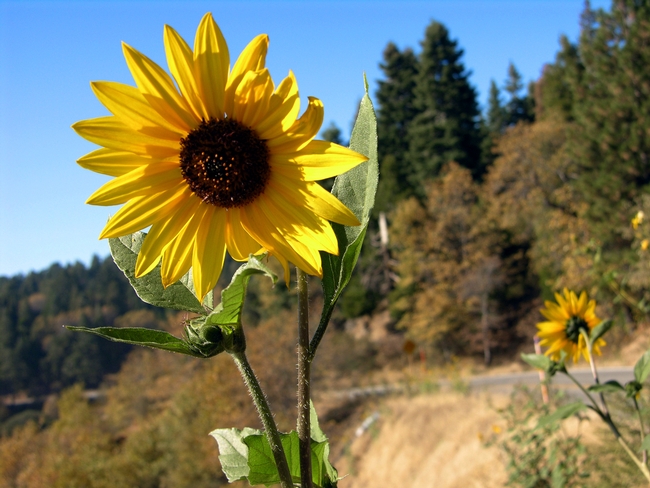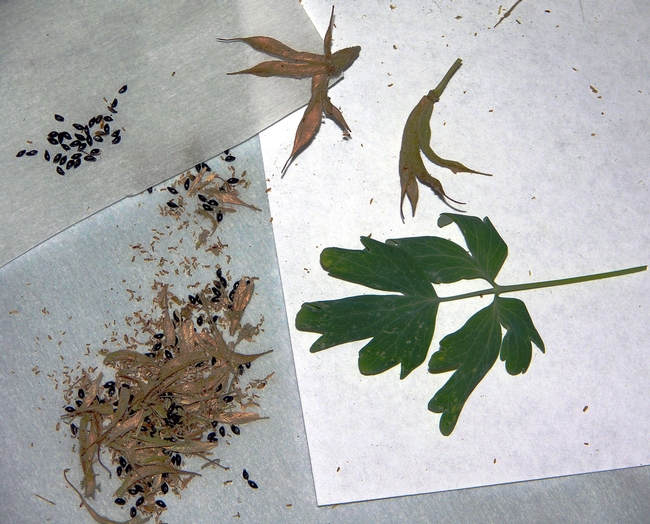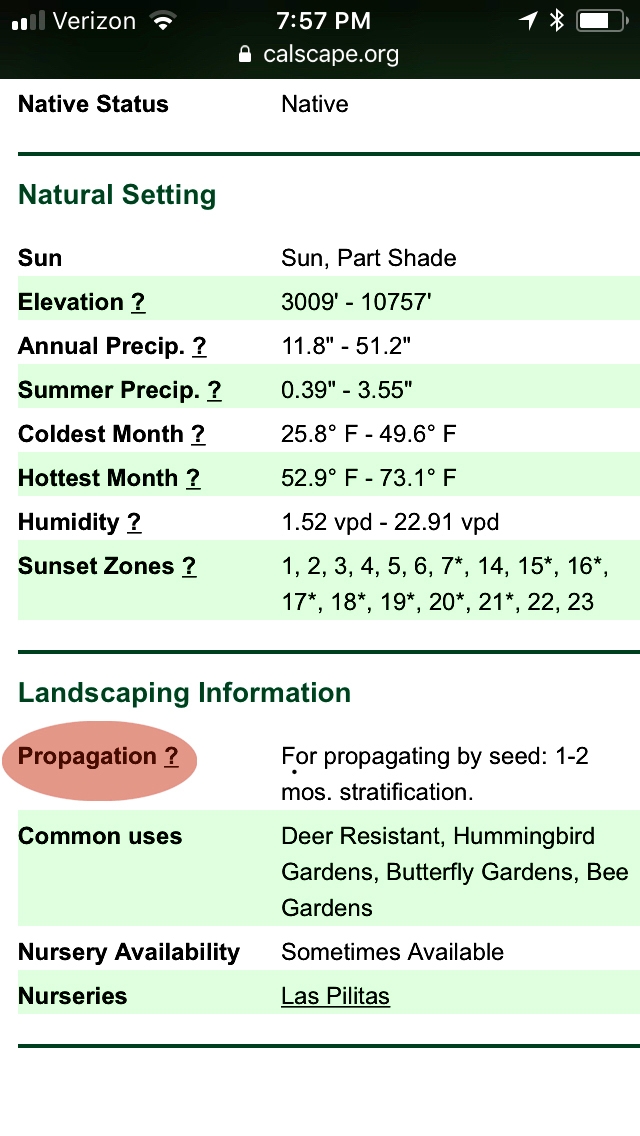
Seeds are ripe when they shake in the pod, are easily removed from the plant, and/or are turning dark in color.
-- from Seed Collection Guidelines for California Native Plant Species, Rancho Santa Ana Botanic Garden, by Michael Wall, Seed Conservation Manager
Fall is seed-gathering time in the mountains. Over the past few years, San Bernardino Master Gardeners have begun to highlight seed-sharing, both as part of the Master Gardener mission, and our service to communities. With its hub at Chino Basin Waterwise Community Center, in Montclair, the San Bernardino County Regional Seed Library (SBRSL) also has satellite libraries in Yucaipa and the San Bernardino Mountains. The mountains seed library, still in its infancy, was created with the idea of connecting mountain residents through a shared love of wild-scape gardening.


Native Seed Propagation Propagating native plants can be tricky, because special conditioning is sometimes required to mimic nature's processes. Some plants, for example, need weeks of cool weather before germinating. Others require fire. Some plants prefer being ingested by birds, bears or other critters. A process called stratification is needed for some varieties. This involves storing seeds in a damp, refrigerated environment (33 - 38°F) for 60-90 days, before they're ready to go into the soil. Other seeds require scarification, or the breaking down of husks by acid-washing, hot water baths, sandpaper rubs, or other processes. In talking with Master Gardeners I've heard both success stories, and mixed reviews when it comes to propagating native seeds. Master Gardener/ROWIA member Cori Edwards, of Crestline shared a plan to use pine needles as kindling over a container of fire-start seeds. Mountain gardeners' seed-germinating experiments can be off-beat and interesting, and they always make for good storytelling.
If you are hoping to collect and propagate native seeds, look to the advice of RSABG and the California Native Plants Society and follow some simple guidelines:
- identify plants first (if possible, use both common and Latin names)
- make a note of the conditions in which each plant thrives (what type of soil, sun, and other conditions do you find?)
- always have permission before harvesting seeds
- be sure there are plenty of seeds left on site – use the 5% rule
- do your research to know what special treatments may be needed (should I stratify, scarify, or just go ahead and sow?)
- share! (don't forget to pass on some seeds, along with tips on how to get them started)
Resources
San Bernardino County Regional Seed Library (SBRL Facebook Page) https://www.facebook.com/sbrseedlibrary/
Rancho Santa Ana Seed Conservation Project https://www.rsabg.org/conservation/seed-conservation
California Native Plants Society, “California Native Plant Propagation,” by Matt Teel, Jan, 2018 https://www.cnps.org/gardening/california-native-plant-propagation-4014
Heaps Peak Arboretum, Rim of the World Interpretive Association https://www.heapspeakarboretum.com/
Calflora http://www.calflora.org/
Calscape http://www.calscape.org/